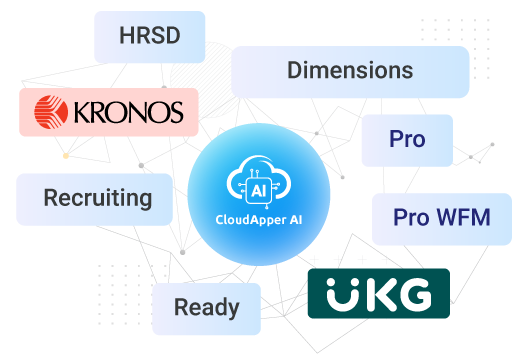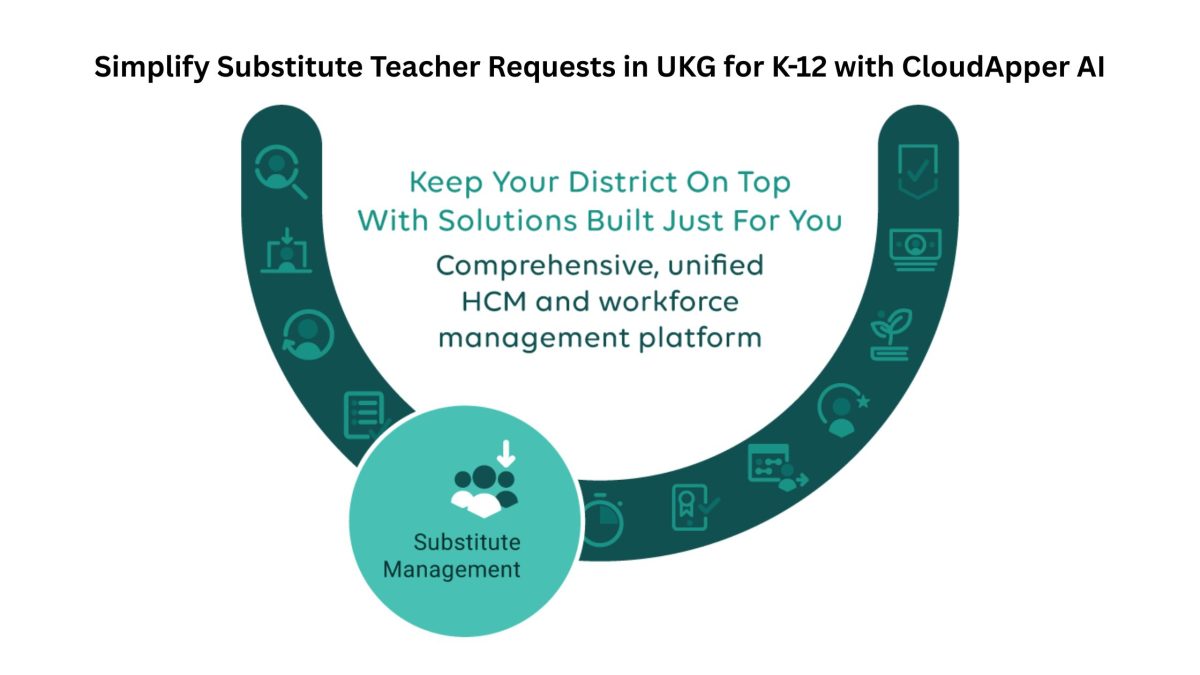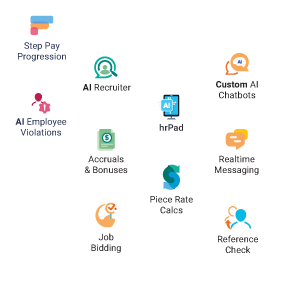Through AI-workflow automation, the company streamlined payroll processes, minimized manual errors, and boosted operational efficiency, allowing HR teams to focus on strategic workforce planning while ensuring fair and timely compensation for employees.
Table of Contents
For years, a steel manufacturer struggled with the time-consuming task of calculating piece rate wages using a manual, paper-based system. Mistakes were common, causing payroll headaches and frustration across the company. In search of a better way, they turned to CloudApper AI for help. Together, they created a custom solution that seamlessly integrated with their existing Kronos UKG Pro WFM (Dimensions) and UKG Pro systems. With the solution’s smart AI-workflow feature, piece rate labor calculations were automated, pulling data directly from their timekeeping system and instantly updating payroll. In this article, we will explore the success story of this steel manufacturer, detailing how the integration transformed their payroll processes, reduced errors, and increased efficiency.
Challenges of Manual Piece Rate Labor Calculations in Manufacturing Payroll
Managing piece rate labor calculations manually was a complex and time-consuming task for the Steel Manufacturer company. Calculating pay for hundreds or thousands of employees, factoring in various job codes and departments, often led to delays and errors. HR teams had to maintain multiple spreadsheets to track production rates and compensation, increasing the risk of discrepancies. Payroll teams were burdened with cross-checking this data, making the process even more tedious and inefficient. This manual approach slowed down payroll operations and often resulted in employee dissatisfaction due to inaccuracies.
How Automation Improved Accuracy in Piece Rate Payroll for Manufacturing
Manufacturing companies often involve piece rate labor, where employees are paid based on the number of units they produce. This method of compensation, while effective, can be challenging to calculate manually, especially when factoring in different job codes, departments, and labor categories.
CloudApper AI simplified this process for the steel manufacturer by automating piece rate labor calculations. It pulled employee job codes and performance data from UKG Pro WFM and applied predefined criteria to calculate each worker’s pay accurately then sent the calculated data to UKG Pro for payroll.
- For instance, if an employee produces 100 units at a rate of $5 per unit, the system automatically calculates the total pay as $500.
This automation not only reduced the risk of manual errors but also ensured that workers were compensated fairly and consistently. By streamlining the process, the manufacturer eliminated payroll discrepancies and significantly reduced the administrative workload.
Improved Employee Satisfaction and Reduced Administrative Burden
When employees trusted that their pay was calculated fairly and consistently, it fostered a positive work environment and motivated better performance. The integration of CloudApper AI with Kronos UKG Pro WFM (Dimensions) ensured that employees were paid correctly based on their productivity, which enhanced engagement and reduced disputes.
Integrating automated systems like CloudApper AI with UKG Pro WFM can streamline payroll operations, reducing manual input and improving overall efficiency in labor-intensive industries (RSM US)(PLOS).
By automating complex pay calculations, HR teams significantly reduced time spent on administrative tasks, allowing them to focus on strategic functions like employee development and workforce planning. This shift improved operational efficiency and boosted employee retention in a competitive labor market.
Conclusion
Manufacturing companies that want to optimize workforce management and ensure fair, accurate compensation for their employees can benefit from the integration of CloudApper AI with Kronos UKG Pro WFM (Dimensions). By automating piece rate labor calculations this solution reduces administrative burden, enhances workforce management, and improves employee satisfaction. CloudApper AI offers manufacturing companies the tools needed to streamline operations and thrive in a competitive environment.


















